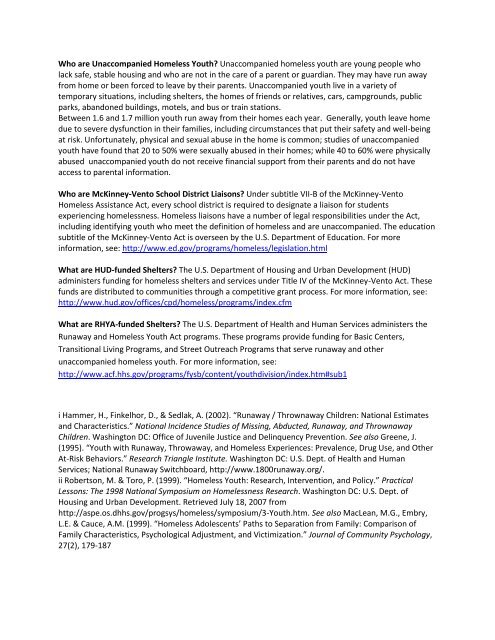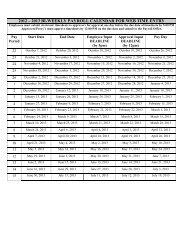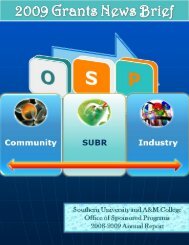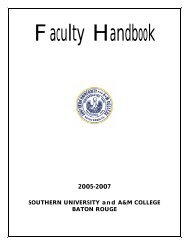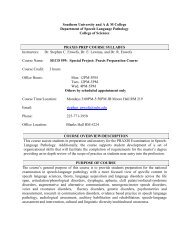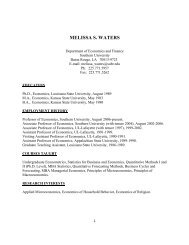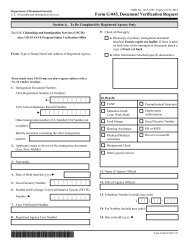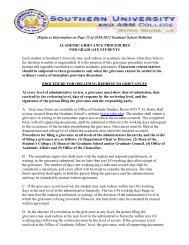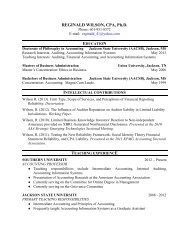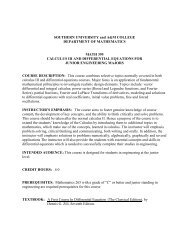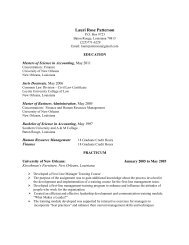Unaccompanied Homeless Youth Verification
Unaccompanied Homeless Youth Verification
Unaccompanied Homeless Youth Verification
You also want an ePaper? Increase the reach of your titles
YUMPU automatically turns print PDFs into web optimized ePapers that Google loves.
Who are <strong>Unaccompanied</strong> <strong>Homeless</strong> <strong>Youth</strong>? <strong>Unaccompanied</strong> homeless youth are young people who<br />
lack safe, stable housing and who are not in the care of a parent or guardian. They may have run away<br />
from home or been forced to leave by their parents. <strong>Unaccompanied</strong> youth live in a variety of<br />
temporary situations, including shelters, the homes of friends or relatives, cars, campgrounds, public<br />
parks, abandoned buildings, motels, and bus or train stations.<br />
Between 1.6 and 1.7 million youth run away from their homes each year. Generally, youth leave home<br />
due to severe dysfunction in their families, including circumstances that put their safety and well-being<br />
at risk. Unfortunately, physical and sexual abuse in the home is common; studies of unaccompanied<br />
youth have found that 20 to 50% were sexually abused in their homes; while 40 to 60% were physically<br />
abused unaccompanied youth do not receive financial support from their parents and do not have<br />
access to parental information.<br />
Who are McKinney-Vento School District Liaisons? Under subtitle VII-B of the McKinney-Vento<br />
<strong>Homeless</strong> Assistance Act, every school district is required to designate a liaison for students<br />
experiencing homelessness. <strong>Homeless</strong> liaisons have a number of legal responsibilities under the Act,<br />
including identifying youth who meet the definition of homeless and are unaccompanied. The education<br />
subtitle of the McKinney-Vento Act is overseen by the U.S. Department of Education. For more<br />
information, see: http://www.ed.gov/programs/homeless/legislation.html<br />
What are HUD-funded Shelters? The U.S. Department of Housing and Urban Development (HUD)<br />
administers funding for homeless shelters and services under Title IV of the McKinney-Vento Act. These<br />
funds are distributed to communities through a competitive grant process. For more information, see:<br />
http://www.hud.gov/offices/cpd/homeless/programs/index.cfm<br />
What are RHYA-funded Shelters? The U.S. Department of Health and Human Services administers the<br />
Runaway and <strong>Homeless</strong> <strong>Youth</strong> Act programs. These programs provide funding for Basic Centers,<br />
Transitional Living Programs, and Street Outreach Programs that serve runaway and other<br />
unaccompanied homeless youth. For more information, see:<br />
http://www.acf.hhs.gov/programs/fysb/content/youthdivision/index.htm#sub1<br />
i Hammer, H., Finkelhor, D., & Sedlak, A. (2002). “Runaway / Thrownaway Children: National Estimates<br />
and Characteristics.” National Incidence Studies of Missing, Abducted, Runaway, and Thrownaway<br />
Children. Washington DC: Office of Juvenile Justice and Delinquency Prevention. See also Greene, J.<br />
(1995). “<strong>Youth</strong> with Runaway, Throwaway, and <strong>Homeless</strong> Experiences: Prevalence, Drug Use, and Other<br />
At-Risk Behaviors.” Research Triangle Institute. Washington DC: U.S. Dept. of Health and Human<br />
Services; National Runaway Switchboard, http://www.1800runaway.org/.<br />
ii Robertson, M. & Toro, P. (1999). “<strong>Homeless</strong> <strong>Youth</strong>: Research, Intervention, and Policy.” Practical<br />
Lessons: The 1998 National Symposium on <strong>Homeless</strong>ness Research. Washington DC: U.S. Dept. of<br />
Housing and Urban Development. Retrieved July 18, 2007 from<br />
http://aspe.os.dhhs.gov/progsys/homeless/symposium/3-<strong>Youth</strong>.htm. See also MacLean, M.G., Embry,<br />
L.E. & Cauce, A.M. (1999). “<strong>Homeless</strong> Adolescents’ Paths to Separation from Family: Comparison of<br />
Family Characteristics, Psychological Adjustment, and Victimization.” Journal of Community Psychology,<br />
27(2), 179-187


